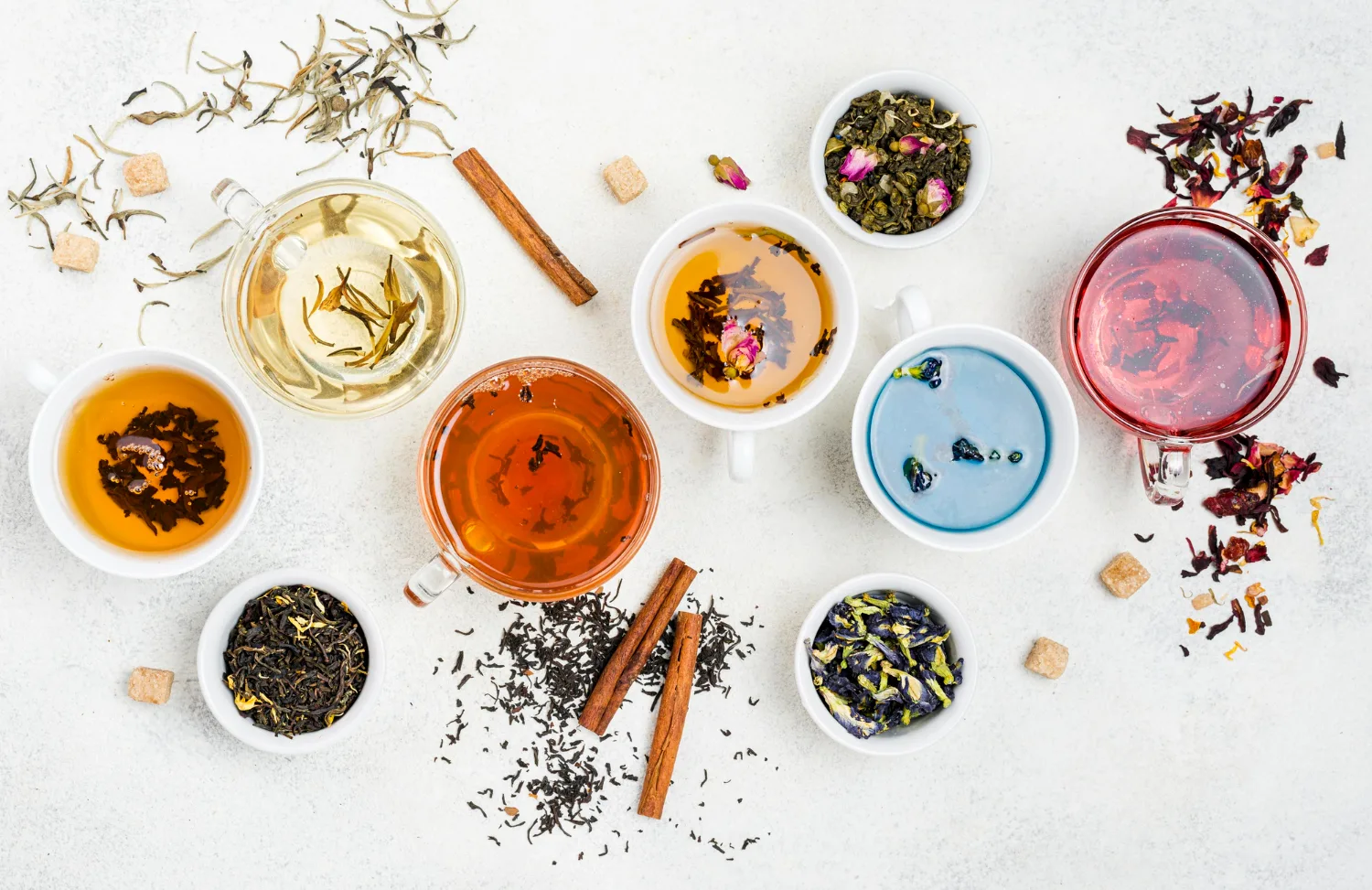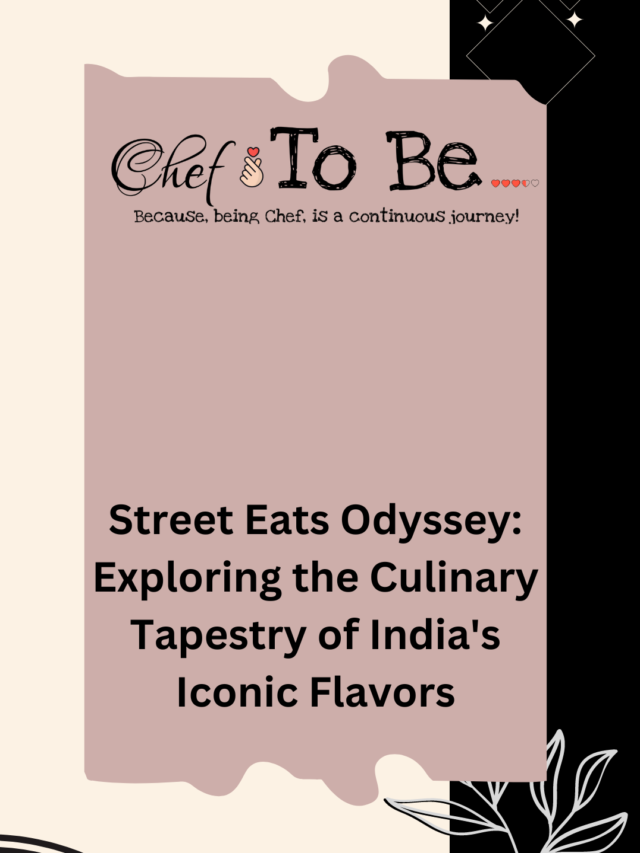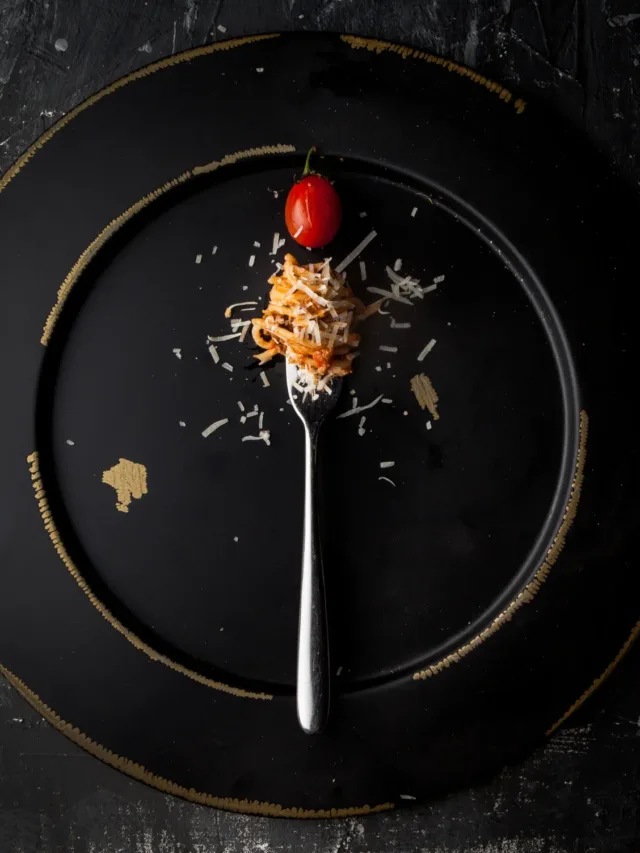Infused flavors have transformed the culinary world, introducing new levels of artistry and innovation to the table. Infusion is the technique of blending ingredients to produce a harmonious mixture of flavors that may transform any dish into a gourmet masterpiece. With the transforming power of infusion, both professional chefs and home cooks may elevate their culinary talents to new heights and create genuinely remarkable dishes.
Hello readers! Welcome back to Chef To Be, if you’re new to here, please check out my most recent post and provide feedback in the comments section. As this is an in-depth article, for ease of navigation, I’ve highlighted the key points for discussion. Now, without any delay, let’s delve into the specific topics we’ll be exploring in this post:
- Introduction
- The Art of Infusion – Elevating Culinary Creativity
- Understanding Infused Flavors
- Essential Ingredients for Infusion
- Mastery in Infusion Techniques
- Embrace Heat with Precision
- Cold Infusion Sophistication
- Layering Flavors with Time
- Toasting and Roasting
- Balancing substances
- Experiment with Unique Pairings
- Precision in Straining
- Customize Intensity
- Elevating Everyday Dishes
- Thoughtful Ingredient Selection
- The Power of Flavor Layering
- Artful Presentation
- Techniques Beyond the Basics
- Elevate with Fresh Herbs and Aromatics
- Fusion of Culinary Cultures
- Elevate Comfort Foods
- Seasoning Mastery
- Homemade Condiments and Sauces
- Interactive Dining Experiences
- Few Infused Products You Should Consider
- Frequently Asked Questions (FAQs)
- Can I use dried herbs for infusions, or is fresh always better?
- Can I combine sweet and savory ingredients in infusions?
- How long should I let ingredients infuse for optimal flavor?
- Are there any ingredients that should not be infused?
- How can I store infused oils and syrups for longevity?
- Conclusion
Infused Flavors – Introduction:
Infusion is more than just adding a bit of flavor; it involves infusing ingredients with the essence of another ingredient to create a distinct and complex taste character. The options for infusing herbs into oils, fruits into spirits, and spices into sauces are boundless. The secret to a successful infusion is carefully selecting the proper ingredients and allowing them to blend over time.
The infusion process requires the presence of essential components. Using high-quality ingredients is vital for achieving the ideal flavor character. Whether it’s fresh herbs, luscious fruits, or aromatic spices, using high-quality ingredients guarantees that the flavors are bright and balanced. The ingredients used depend on the food or drink being produced, as different combinations might result in varied flavor profiles.
Mastery of infusion procedures is another crucial consideration. There are several strategies to try, ranging from short infusions that provide immediate flavor to lengthy infusions that build nuanced flavors over time. Patience is essential when it comes to infusion, as flavors require time to develop and blend. Chefs can open up a world of possibilities by learning new techniques and experimenting with different ingredients.
In the parts that follow, we’ll go deeper into the realm of infused flavors, learning about the essential components, perfecting infusion processes, and understanding how versatile they are. Join us on this culinary trip as we discover the secrets of infusion and make remarkable dishes that will leave an impression. Let us begin this wonderful adventure together.
The Art of Infusion – Elevating Culinary Creativity
In the dynamic realm of culinary arts, flavor exploration is a never-ending quest. Among the many ways that chefs use to improve food, the art of infusion stands out as a transformational and creative endeavor. This comprehensive guide looks into the essence of infused flavors, including their description, the necessary components involved, and also, mastering infusion processes, attaining flavor harmony, the significance of time, and practical chef recommendations. In addition, we’ll explore the diversity of infused flavors in everyday dishes, join the movement to celebrate flavor enthusiasts and connect the notion to Chefhood’s ongoing journey.
Understanding Infused Flavors
Infusing flavors entails extracting aromatic and delicious molecules from one item and putting them into another. Infusions are commonly made with liquids such as oils, vinegar, and spirits. The trick is to give the components time to interact and gradually transmit their essence.
Infusion techniques:
Heat Infusion: This traditional method includes slowly heating a beverage to encourage the release of flavor. For example, infusing herbs such as basil or thyme into olive oil over low heat can yield a fragrant and tasty oil.
Cold infusion: is a slower technique that preserves freshness, making it ideal for more delicate ingredients such as fruits or some herbs. Cold-infused water with cucumber and mint is a delightful example.
Ingredients for infusion:
Herbs and spices: Fresh or dried rosemary, thyme, and spices such as cinnamon and cardamom are wonderful options.
Citrus zest: The bright oils found in citrus peels can give infusions a zesty edge. Lemon-infused olive oil, for example, is a versatile cooking ingredient.
Other ingredients: Berries, citrus fruits, and even tropical fruits can provide a rush of natural sweetness when infused.
Balancing Act:
Achieving a well-balanced infusion is similar to writing a symphony. Consider the intensity of the tastes you’re dealing with and the outcome. Balance is essential; too much of one element might overwhelm the others.
Infused Oils and Vinegar:
These versatile ingredients can transform your cooking experience. For instance, garlic-infused olive oil poured over roasted veggies or balsamic vinegar infused with strawberries for an unusual salad dressing.
Think creatively and try new combinations:
For an unexpected twist, try lavender-infused honey or chili-infused chocolate.
Patience is a virtue:
Give the components time to work their magic. Whether you’re infusing for a few hours or several days, patience will result in a more complex and developed flavor profile.
Essential Ingredients for Infusion
Quality Base components:
A good infusion starts with high-quality base components. Whether it’s a neutral oil, vinegar, or spirit, choosing the highest quality ensures a clean slate for the infusion process. To improve overall taste richness, consider sourcing fresh, organic herbs, spices, and fruits from your local area.
Fresh Herbs:
Infusions rely heavily on herbs for their flavor. Fresh herbs, such as rosemary with their earthy notes, and aromatic properties of basil, provide a rush of natural deliciousness. Experiment with flavors like thyme and sage for a savory infusion or mint and cilantro for a fresh twist.
Aromatic Spices:
Increase the depth and warmth of your infusions by experimenting with different spices. Cinnamon sticks, cardamom pods, and star anise may give your dishes a rich flavor profile. To maximize the benefits of the spices, lightly toast them before infusing.
Fresh Fruits:
The natural sweetness and juiciness of fresh fruits can enhance infusions to new heights. Berries, sliced apples, and tropical fruits such as pineapple can provide a delicious sweetness. For a pleasant blend, try combining fruits with complementary herbs and spices, like apples with cinnamon, etc.
Garlic and Onions:
These two ingredients are undoubtedly, essential for creating delicious infusions. Roasted garlic-infused oil and caramelized onion-infused vinegar can add flavorful depth to a variety of recipes.
Vanilla Beans:
Vanilla gives a rich and sweet flavor to infusions. Splitting and scraping the seeds of vanilla beans into a neutral spirit or syrup can yield a versatile basis for both sweet and savory recipes.
Chilies:
Adding chilies to a dish can provide a satisfying kick. Chilies bring a bold and adventurous touch to a variety of dishes, whether it’s infusing oils with dried red chilies for a spicy kick or making chili-infused chocolate for a distinct dessert experience.
Mastery in Infusion Techniques
Let’s decipher the complexities of mastering infusion techniques, from fundamental principles to sophisticated strategies that will take your creations to Michelin-worthy heights.
Embrace Heat with Precision:
Heat infusion is a traditional technique for extracting tastes from liquids by gently warming them. The key here is precision. Whether you’re infusing oils, syrups, or spirits, keeping the heat low and consistent allows for the progressive release of aromatic compounds without jeopardizing the components’ integrity.
Cold Infusion Sophistication:
Cold infusion is a complex method that requires effort to get subtle flavors. This approach is perfect for preserving the flavor of elements such as, fresh herbs, fruits, and botanicals without exposing them to heat. Cold-infused waters, oils, and vinegar can also enhance the freshness and complexity of your culinary range.
Layering Flavors with Time:
Mastering infusion requires recognizing the importance of time as a key element. Allowing tastes to interact over time indeed, adds layers of richness. Consider making infusions that last for days or even weeks, such as barrel-aged cocktails or complex herbal tinctures.
Toasting and Roasting:
Incorporate toasting and roasting techniques to improve your infusion game. This enhances the flavor of the spices and nuts before they are added to the infusion medium. Toasted spices can give oils a warm and powerful flavor, and also, roasted nuts can provide a rich smoothness to spirits.
Balancing substances:
Creating a harmonious balance of substances is an art. Understand the potency of each element specifically, herbs, spices, fruits, or aromatics—and try for a harmonious blend in which no single flavor dominates. A well-balanced infusion demonstrates the skills of an experienced cook.
Experiment with Unique Pairings:
To get mastery, push limits and experiment without fear. Incorporate unexpected components to produce avant-garde blends. Consider infusing savory herbs like thyme with sweet fruits like figs to create a flavorful combination that will surprise and please the tongue.
Precision in Straining:
Mastery extends beyond the infusion procedure to include precise straining. Ensure that your final product is free of any undesirable particles, resulting in a clear and immaculate infusion that reflects your dedication to perfection.
Customize Intensity:
Adjust the intensity of your infusions to match the food or drink you’re making. Understanding when to terminate the infusion process avoids overbearing flavors. This subtle approach demonstrates your competence in creating personalized experiences for your guests.
Elevating Everyday Dishes
Elevating daily dishes is an art form that elevates the ordinary into the spectacular. Let’s look at the tactics, strategies, and creative ways that can help you to improve the ordinary eating experience:
Thoughtful Ingredient Selection:
Selecting the right components is crucial for improving any cuisine. Select fresh, high-quality produce, meat, and pantry necessities. Local and seasonal foods not only improve flavor but also help to promote a sustainable and community-driven culinary approach.
The Power of Flavor Layering:
Incorporate multiple levels of taste to enhance your cuisine. Consider adding depth using techniques such as marinating, brining, and infusing. Each layer should complement the others, resulting in a balanced and complex flavor experience.
Artful Presentation:
Make a simple meal into a visual feast by focusing on presentation. To make your dishes more visually appealing, use aesthetically pleasant plate techniques, garnishes, and color combinations. A well-prepared food enhances the entire eating experience.
Techniques Beyond the Basics:
Exhibit your culinary skills with advanced cooking techniques. Whether it’s sous vide, smoking, or molecular gastronomy, incorporating these techniques can elevate classic recipes while maintaining their comforting core.
Elevate with Fresh Herbs and Aromatics:
These are your secret weapons. Use a range of herbs to elevate common recipes, including basil, cilantro, thyme, and rosemary. The aromatic dance of these components may transform a basic dish into an unforgettable culinary experience.
Fusion of Culinary Cultures:
Incorporate global flavors into everyday dishes by exploring culinary cultures. Introduce spices, herbs, and cooking techniques from other locations to make a delectable cross-cultural meal.
Elevate Comfort Foods:
Gourmetize traditional comfort foods. Whether it’s truffle mac ‘n’ cheese, enhanced grilled cheese sandwiches, or gourmet burgers, putting a refined take on classic dishes can surprise and amaze your guests.
Seasoning Mastery:
Mastering seasoning is essential. Understanding the balance of salt, acidity, sweetness, and umami can help you accentuate the natural flavors of your components. A skilled chef is distinguished by his or her expertise in seasoning.
Homemade Condiments and Sauces:
Create homemade condiments and sauces to enhance your meals. Whether it’s a tangy aioli, a tasty chimichurri, or a rich truffle-infused sauce, these condiments can improve even the most basic dishes.
Interactive Dining Experiences:
Create engaging dining experiences, for example, create your own toppings, bowls, or personalized garnish stations. Allowing diners to customize their dishes increases engagement and improves the whole eating experience.
Few Infused Products You Should Consider:
- Sprig Roasted Chilli Oil
- Azafran Organic Extra Virgin Olive Oil, Infused with Bird’s Eye Chilli
- Gourmet Garden,Oregano Infused Olive Oil
- SPRIG Sriracha Aioli
- Sprig Toasted Sesame Oil
- Sprig Extract of Natural Bourbon Vanilla
- Sprig All Natural Lavender Extract
- Gourmet Garden Garlic Infused Olive Oil
- Gourmet Garden Basil Infused Olive Oil
DISCLAIMER: All above recommendations are based on avg. customer reviews by Amazon, I am not associated with any kind of endorsement with these brands, Analyze the products according to your own set of parameters before purchasing.
FAQ
Conclusion
In the wide tapestry of gastronomy, mastering the technique of infusion certainly opens the door to limitless gastronomic options. It’s a voyage of studying flavors, experimenting with ingredients, and striking the ideal balance that elevates the ordinary to the spectacular. As chefs, we embrace the art of infusion, which not only enriches our products but also leads customers on a sensory journey with each bite. So, let the magic of infused flavors work in your kitchen and watch as it creates a symphony of flavors for your culinary repertoire.
If you have any doubts, comment below this post or connect with us through:




